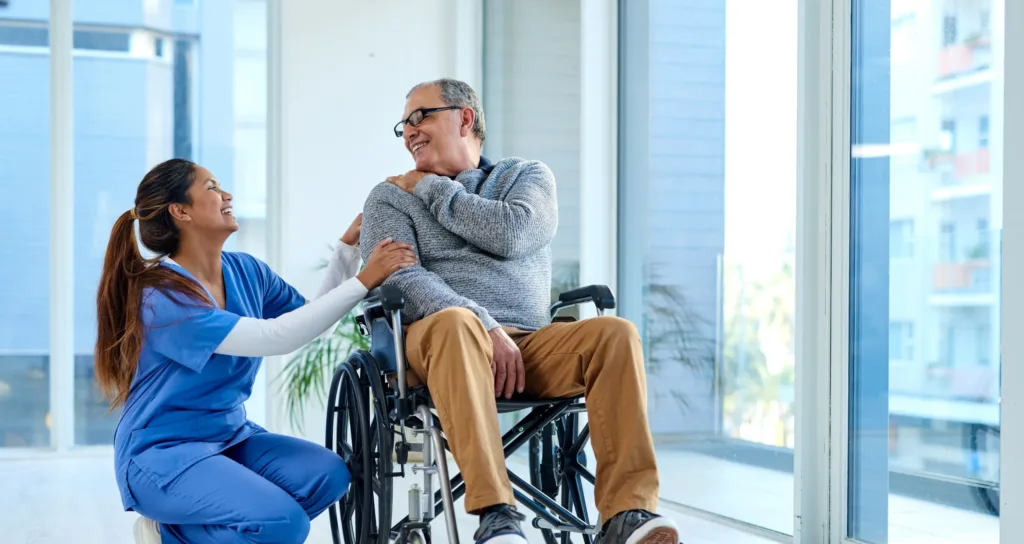October is spina bifida awareness month – a time to draw attention to the struggles faced by individuals diagnosed with this disorder. About 1,278 babies are born with this congenital disability in the United States each year. In this article, we will explore the types of spina bifida, risk factors and resources.
What is spina bifida?
Spina bifida is a type of neural tube defect that affects the spine. It occurs when the neural tube doesn’t close as it should during fetal development, damaging the spinal cord and nerves. It can occur anywhere along the spine, and the severity of the condition depends on the size and location of the opening and whether the spinal cord and nerves are affected.
Types
There are three common forms of spina bifida.
Myelomeningocele
Myelomeningocele is the most common and severe form of spina bifida. In this condition, a sac of fluid containing part of the spinal cord and nerves comes through an opening in a baby’s back. It results in moderate to severe disabilities and can lead to loss of feeling, paralysis or incontinence.
Meningocele
Meningocele spina bifida occurs when a sac of fluid comes through an opening in a baby’s back. There is generally little or no nerve damage because the spinal cord is not in the sac. This form of spina bifida can cause minor disabilities.
Spina bifida occulta
Spina bifida occulta is the least severe form of the condition, sometimes known as “hidden” spina bifida. In this form, there is a gap in the spine but no opening or fluid sac. This form generally does not cause disability and is sometimes undetected for years.
Associated health conditions
Although spina bifida presents differently in every person, several complications typically accompany the condition. Here are a few:
Hydrocephalus
Sometimes called “water on the brain,” hydrocephalus occurs when there is extra fluid in or around the brain, leading to swelling in the head. Hydrocephalus can be treated with surgery.
Mobility issues
Individuals with spina bifida that occurs higher on the spine may have paralysis in their legs, while those with spina bifida lower on the spine may have more use of their legs. Because of this, they may use mobility aids such as wheelchairs, walkers, braces or crutches.
Skin care
Spina bifida often causes a loss of feeling in some areas of the body which can lead to individuals getting cuts, bruises, pressure sores and other wounds without their knowledge. People with spina bifida should avoid hot surfaces that may cause burns, ensure they wear properly fitting clothing, use sunscreen regularly, and don’t sit or lie in one position for too long.
Skin wounds are the most common reason for hospitalization in people with the condition. Parents and caregivers should help perform skin checks to ensure no unhealed wounds.
Latex allergy
Many people with spina bifida are allergic to products containing latex. Parents and caregivers should be careful to avoid items such as latex pacifiers and gloves.
Causes and prevention
Scientists are still discovering all of the causes of spina bifida; they have identified several ways for women to reduce the risk of having a baby with the condition. Spina bifida develops in the first few weeks of pregnancy, often before a woman knows she is pregnant.
Take folic acid
Women who are pregnant should take 400 micrograms of folic acid daily. Because over half of pregnancies in the United States are unplanned – doctors recommend taking folic acid if it is possible you may become pregnant. Women who have had babies with spina bifida in the past may need a higher dose of folic acid.
Avoid overheating
Frequent use of saunas and hot tubs may overheat your body.
Lower fevers
If you get a fever, treat it right away with acetaminophen.
Resources
Several organizations provide valuable resources to individuals and families managing spina bifida. Here are just a few:
Centers for Disease Control and Prevention:
Spina Bifida Association:
We hope this article has helped raise awareness about the symptoms, risk factors, and resources available for those with spina bifida and their families. Access to proper medical care and home health services go a long way in effectively managing this condition. Maxim Healthcare Services has over 150 locations offering home healthcare services across the country. Reach out to your local office to learn more about the services available in your area.

